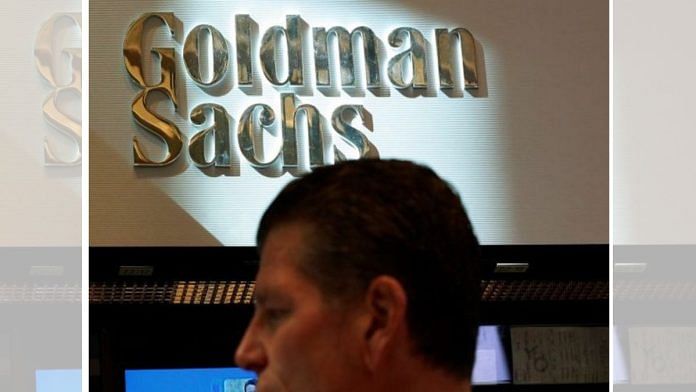New Delhi: India’s affluent class — people with an annual income of $10,000 (about ₹8.3 lakh) or more — is expected to grow to 100 million from the current 60 million in the next three years, revealed a report released by Goldman Sachs Friday.
This segment of the population, which accounts for roughly 4 percent of India’s working-age population, has expanded 12 times faster than the overall population in the past four years, the report highlighted.
The number of citizens in India’s affluent class has increased from 24 million consumers in 2015 to 60 million in 2023 — earning roughly five times India’s average per capita income of US$2,100.
The report, titled ‘The Rise of Affluent India’, noted that this increase could impact the consumption of products, such as leisure, jewellery, out-of-home food, healthcare, and premium brands.
The report by the American investment bank observed that there has been a major increase in the value of financial and physical assets in India between 2019 and 2023, primarily in three key asset classes — equities, gold and property.
“The increase has been the largest for equities and gold, while property prices have seen a higher rate of appreciation in the past three to four years”, the report stated.
Meanwhile, another report by the State Bank of India (SBI) released Monday also suggested that income inequality in India has reduced substantially since 2013-14.
The report, based on data released by the Income Tax Department, showed that more than one-third of the people who reported an income of less than Rs 3.5 lakh a year in 2013-14 have been able to move to higher income brackets by 2020-211. It also showed that the share of income reported by the filers at the top of the income distribution has declined.
Also Read: Sitharaman says Indian economy will hit $5 trillion by 2027-28, 3 yrs after Modi’s 2025 target
Equities and property prices
Looking at equities, Goldman Sachs revealed that the number of demat accounts — electronic accounts used to trade shares in the stock market — has increased to 114mn in 2023 from 41 million in 2020.
Moreover, “the net flow of household savings into shares has seen a large increase since FY17 and has been consistently high over FY17-23, which could imply continued rising participation in the equity markets, in a period of strong market returns”, the report observed.
Similarly, looking at gold, the report said, Indian households own roughly 25,000 tonnes of gold, which is approximately 10-11 percent of the world’s physical gold stock according to the World Gold Council.
From an average of Rs 39,900/10gm in January 2020 to Rs 62,200/10gm in December 2023, gold has seen a 65 percent increase in its value in the past three years, the Goldman Sachs report revealed,
Thus, the total value of household gold in India has risen to US $1.8 trillion or 1.8 lakh crore from US$1.1 trillion or 1.1 lakh crore since 2019-2023, it added. This has greatly affected the rising wealth of the affluent Indian class.
Property prices in India, meanwhile, have not risen as sharply in the past four years, according to Goldman Sachs. The average property prices in the country have risen 30 percent between 2019 and 2023 compared to a much slower increase of 13 percent between 2015 and 2019.
Increase in income tax filings and more
Furthermore, between 2017 and 2022, income tax filings increased at an average rate of 8 percent per year, with people filing returns with an income of over Rs 10 lakh growing at 19 percent, the report revealed.
Similarly, between 2019 and 2023, the number of term deposits — consisting of fixed and recurring deposits — above Rs 15 lakh in banks grew at an average rate of 45 percent per year compared with just a 3 percent growth in deposits in those below that.
The number of credit cards in the country has grown at an average of 16 percent per year, with 85 million credit cards in India at the end of the fiscal year 2023. Debit cards have grown at 1 percent since the fiscal year 2019, with 960 million debit cards until 2023, according to the report.
Credit card spending has increased 2.5 times in the past 12 months compared with fiscal year 2019, the report added.
Companies which target the wealthy classes have grown much faster than companies addressing the masses. The report cited a few examples, such as Nestle India growing faster than Hindustan Unilever and Metro growing faster than Bata, among others.
Even within companies, sections selling premium products have grown faster, the report highlighted.
Furthermore, companies selling products for premium consumers have grown rapidly, according to the report. “Companies in categories which largely address top income consumption like jewellery (Titan), travel (MakeMyTrip, Indian Hotels), premium retail (Phoenix Mills), premium online beauty (Nykaa) and premium healthcare (Apollo Hospitals) have seen strong growth,” it added.
(Edited by Richa Mishra)
Also Read: From IMF to rating agencies, Modi govt’s rebuttals are improving. Backed by data & valid arguments



